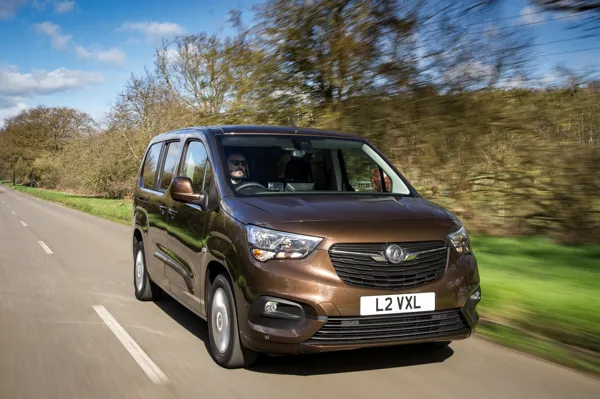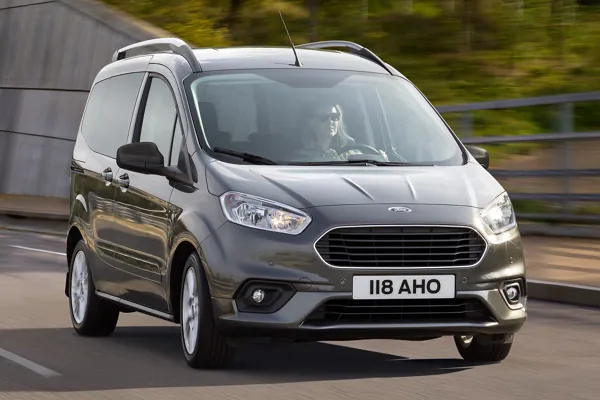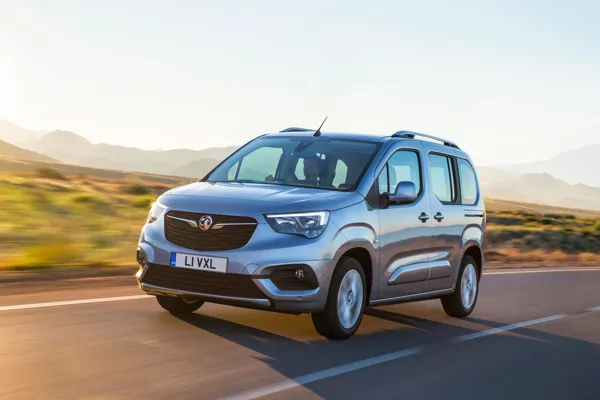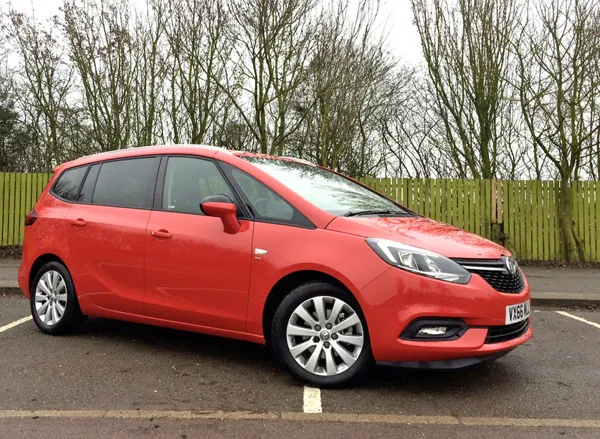Review
February 2018
Simon Harris receives no nasty shocks following the Ford S-Max's first major service.
The S-Max has been a high-mileage fleet car since it arrived a year ago. Soon it will be making its way back to Ford to be replaced with something rather smaller.
By the time I had got behind the wheel last October, it had already racked up 14,000 miles – nudging an average of 500 miles a week.
The S-Max had reached 18,000 miles by the start of February and it was time for its first major service.
The car hadn’t missed a beat up to this point, but the dashboard display had begun nagging me to change the oil as the service approached.
I wasn’t expecting any bad news from the service and, according to the job sheet, there was nothing unexpected.
Four new tyres (understandable after 18,000 miles), fresh oil, coolant and a new ‘odour’ filter (often called pollen filter) were all that was required, with no other issues arising that needed attention.
It’s difficult to compare like-with-like in this sector, especially as our S-Max comes with optional all-wheel drive – the large MPV sector has evolved into SUVs.
But, according to our SMR running cost figures, the Ford’s 4.79p per mile over four-years//80,000 miles is slightly lower than the equivalent Volkswagen Tiguan Allspace (also with 150PS, 4WD and seven seats) with 5.15p per mile.
Of course, SUVs are desirable, especially with the right badge, and in that comparison, the Volkswagen makes up all lost ground on the S-Max – still one of the most desirable MPVs as a used buy – and then some with its superior RV.
The S-Max has completed a round-trip to Wales for a business meeting since its service, and is continuing to perform as expected.
Although this one is a six-speed manual, the long-legged nature of the 150PS diesel engine means it takes motorway miles in its stride. Even off the motorway, you aren’t hunting for the right gear.
You have to wonder how long the market for large MPVs can be sustained in the UK, and what form a successor to the S-Max might take.
Simon Harris
January 2018
A brief trip abroad allowed me to sample some of the convenience features the S-Max is available with.
It has been mentioned before that the headlights are all-LED adaptive units with ‘glare-free’ main beam.
They are supremely effective, and with the main beam set on automatic, I haven’t had any angry flashes from the headlights of oncoming vehicles.
An additional feature within the settings means they can be adapted for right-hand traffic, so avoiding the normal left-side bias of our cars unintentionally dazzling other road users abroad.
It means that while you need to carry all the necessary extra equipment for overseas travel, there’s no need to mess about with headlight deflector stickers – which would be more difficult to work with on LED headlights as they generate no heat.
After boarding the DFDS Seaways ferry at Dover for Calais and parking up, I set up the headlights for driving on the right.
It was also a good opportunity to test the unstressed high-speed fuel economy as a mainly motorway route for two-and-a-half hours beckoned on the other side of the channel along roads that remained more or less flat.
The S-Max did creep closer to the official combined figure of 52.3mpg, ending the outward leg of the trip at 48.5mpg according to the trip computer.
It didn’t quite fare so well on the return leg, with the displayed average slipping down to 46mpg by the time it arrived at Dunkirk ferry terminal, and with long uphill stretches along the A2 from Dover, the calculated average fuel consumption on refuelling was a disappointing 41.1mpg.
However, the S-Max proved an ideal companion for international travel, with plenty of space, ample pace for long-legged motorway travel, and excellent comfort and refinement – with laminated side glass helping insulate the interior from the outside world.
Simon Harris
December 2017
The decline in the market for MPVs or people carriers can be viewed alongside a rise in appetite for SUVs.
People like the more rugged look of SUVs, and when they can seat the same number of passengers and offer equal or better versatility, people tend to want the most they can get for their money.
We have North Americans to thank for this obsession with SUVs, and Ford has been trying to solve the conundrum of what might work in all markets.
Its recent ‘One Ford’ model strategy aims to create global vehicles rather than cars and LCVs developed by and for regions of the world.
The Kuga SUV, developed initially for Europe, has become the Escape in North America and is a global model in its second generation.
The Ecosport compact SUV, developed in South America, was launched in Europe a few years ago.
The Edge large SUV (by our standards, at least), launched in Europe in 2016, became a global car for its second generation.
But the Edge only has five seats, and in almost any UK review of the car, this complaint will be prominent.
I drove one recently, and apart from not quite utilising its footprint as well as it could (it’s a few millimetres longer and wider than an S-Max), it’s a fine automobile.
Which brings us back to the Ford S-Max. Based on the same platform as the Mondeo (also a global car now), this more driver-focused alternative to the Galaxy will seat seven.
And the version we have on test is fitted with optional all-wheel drive.
My first few hundred miles behind the wheel have reminded me that you get many of the benefits of an SUV – a high driving position, plenty of space, and, in this version, extra security in poor driving conditions, for a modest 10g/km increase in CO2 emissions over a front-wheel drive version.
With a few months of winter ahead, I’m looking forward to relying on it.
Simon Harris
November 2017
I’ve always had a bit of a soft spot for the Ford S-Max. The original model launched in 2006 and was widely regarded as being good to drive.
Ford also offered it with the 2.5-litre turbocharged engine from the Focus ST, which went some way to giving it wide appeal.
As time has moved on, the S-Max has evolved.
It’s got more tech, more style and more efficient engines (helping it to pick up five Fleet News Awards in the past decade).
But the market has moved on, too. The rise of crossovers has seen many families deflect to more stylish SUVs instead and some manufacturers have responded by replacing their MPVs with SUVs.
That leaves our S-Max in a bit of a black hole, particularly as our model is a four-wheel-drive.
While we wouldn’t necessarily advise choosing an all-wheel-drive it has its advantages in the winter months.
At least that’s the theory. We haven’t had chance to find out as the S-Max joined our fleet at the end of winter (later than scheduled).
We’ll hopefully put it through its paces over the final few months of its test.
The only other people carrier with all-wheel-drive is the SsangYong Turismo. It’s much bigger than the S-Max, but not as good to drive.
Its high CO2 emissions (205g/km) also won’t appeal to fleet managers. Coincidentally, because it is so cheap, its benefit-in-kind (BIK) tax is almost aligned with the S-Max’s at £1,800 per year (20% taxpayer).
A better choice would be the new Škoda Kodiaq, which with seven-seats and a 150PS diesel engine costs the driver also £1,800 a year. Running costs are lower at 39ppm versus our car’s 42ppm.
Having driven our S-Max back-to-back with the Land Rover Discovery Sport, I found the two offer remarkably similar driving experiences – in a good way. Both are very agile for such large cars.
They have similar levels of efficiency (around 40mpg during our tests) but the S-Max is nearly £7,000 cheaper.
Matt de Prez
October 2017
In her song Big Yellow Taxi, Joni Mitchell sang “you don’t know what you’ve got ’til it’s gone”, and although this wasn’t about switching out of her long-term Ford S-Max, I’ve taken her sentiments to heart.
A slight reshuffle in our test car fleet is seeing me move out of our people carrier, and the loss of the Ford’s practicality has sparked a flurry of activity.
First off was a trip to a nearby paddock to pick up a dozen or so bags of well-rotted horse manure to give both mine and my parents’ gardens a boost.
The S-Max’s low boot lip and flat load area when the rear and middle row of seats are folded made it easy to load and unload.
The imminent loss of the MPV also accelerated my plans to renovate my ‘home office’.
At the moment this consists of a computer desk and filing cabinet surrounded by various bits of sports equipment, as well as a little-used exercise bike.
I want to make it more conducive to working in, so headed off to my nearest Ikea to pick up some flat-pack furniture.
Again, the S-Max proved capable. Despite being 2.2m long, the bookcase boxes fitted in diagonally across the load bay – something which wouldn’t be possible in any of our other cars.
Its practicality isn’t the only thing I’ll miss about the Ford. It’s well-built and good to drive, being particularly adept as a long distance cruiser.
However, this also highlights a shortcoming: its fuel economy is averaging 41.2mpg (official fuel economy is 52.3mpg), meaning that while I’ll miss many things about the S-Max, my bank account will be breathing a sigh of relief.
September 2017
For the vast majority of its time with me, the Ford S-Max has led a fairly straightforward life.
I don’t have children, so its practicality was probably appreciated more by colleagues who have borrowed the car for its people and luggage-swallowing abilities.
Of course, there have been times when I’ve taken advantage of its space, such as transporting furniture or bicycles, but usually I’m able to luxuriate in the comfort, equipment, airiness of the cabin and the excellent driving position our long-termer offers.
However, for a week earlier this month the S-Max’s life (and mine) was turned upside down when it became the family taxi for the visit of my older brother and his three children, aged between four and 10.
This meant it was in constant use, ferrying them between children’s play areas, the cinema, swimming pools and my parents’ house, with my younger brother and his five-year-old daughter occasionally joining us to fill all of the seven seats.
Unsurprisingly, the S-Max coped brilliantly.
There was plenty of room for all passengers and their luggage, the car’s driving and ride characteristics remained unruffled, while its 150PS engine coped well with the extra load it was being asked to transport.
The ease of installing the Spotify app on the S-Max’s infotainment system also came in useful, as my older brother used it to keep my nieces and nephews amused by playing the Captain Underpants soundtrack on a repeating loop.
The only negative point was the lack of air vents for the third row of seats.
This was highlighted by my younger brother who complained of being too hot while sat there, but when I turned the air conditioning up to cool him down, the occupants of the middle row of seats complained as they were taking the full brunt of the cold air.
The result? The mid-row occupants were closer and louder, so the air conditioning was turned down and my brother was left to suffer.
August 2017
Our Ford S-Max long-termer has many impressive features and one of these is its adaptive LED headlamps system.
Fitted to our car as part of the optional Titanium X pack, which – for £2,225 – also includes heated leather seats, the lights use a range of factors to select the optimum lighting pattern.
Standard automatic lights simply switch between main beam and dipped headlights dependent on the conditions and traffic.
But Ford’s adaptive system also bases its decision on speed, steering wheel angle and information from a camera mounted behind the windscreen, such as the presence of other vehicles or street lights.
The system creates ‘dark spots’ so oncoming traffic is not dazzled.
Headlight strength on the on-coming side of the road is reduced, while the side the car is on is illuminated fully, as if still on main beam.
It’s an enormously clever system and works so smoothly the shifting light patterns are never distracting.
Another of the options fitted to our S-Max is its front wide-view and rear-view cameras (£400).
The front-facing one is in the radiator grille. In theory, it should be useful as it gives a 180 degree view of what is in front of the car.
This means that when you pull out of a parking space or a junction where visibility is reduced, you can see any oncoming traffic.
In practice, though, I’ve barely used it as visibility from the commanding driving position is so good.
The rear-view camera, however, has been much more useful.
The S-Max is a large car, but being able to see on its eight-inch multimedia screen what is around you makes reversing much simpler.
July 2017
Our Ford S-Max is proving to be an exceptionally practical car – as you would expect from a seven-seat people carrier – but disappointingly costly to fuel.
In normal use, it averages between 39mpg and 41mpg per tankful, compared to its official combined fuel economy of 52.3mpg.
While this may not seem too big a shortfall, I’ve recently returned to the S-Max after a spell in our long-term Vauxhall Zafira 1.6 CDTi, in which I achieved 54.5mpg.
The Ford’s fuel consumption is undoubtedly hindered by its all-wheel drive system.
The equivalent front-wheel drive model has official fuel economy of 56.5mpg, with CO2 emissions benefiting too; the standard model emits 129g/km compared to the AWD model’s 139g/km.
June 2017
As with any seven-seat MPV, one of the biggest assets of our Ford S-Max long-termer is its practicality.
And it is this quality which has seen it in demand from my colleagues over the past month.
First, our editor-in-chief Stephen Briers borrowed it for its passenger-carrying ability.
Then staff writer Matt de Prez made the most of its large load space which rises from 285 litres with all seven seats in place, to 965 litres (five seats), to 2,020 litres with just the front seats. He wanted to carry four large alloy wheels.
Finally, as our test model came with a £750 optional detachable towbar (the S-Max has a maximum towable weight of 2,000kg braked and 750kg unbraked), head of publishing Luke Neal borrowed it to tow a caravan to Wales for a holiday.
Fitting the towbar was simple and quick: two clips needed to be undone to remove a cover, and then the towbar was easily slotted into its holder. A key is used to lock it in place, preventing it being stolen.
The S-Max’s practicality is enhanced by the design of the cabin. There are plenty of useful storage compartments dotted around, including a number of cupholders, a large cubby hole underneath an armrest between the front seats. Plus there is an overhead console near the rear-view mirror which includes a sunglasses compartment and child observation mirror so the driver can keep an eye on passengers in the second and third rows.
The family-friendliness of our car has been further increased by the additional of the £400 Titanium family pack.
This includes a cargo floor net, retractable rear-door sunblinds, a 220V power outlet, foldable trays fitted to the rear of the front seats and power fold-flat third row seats.
All are useful additions and the pack is an option well worth considering. Without it, the S-Max is a very good family car. With it, it becomes an excellent one.
May 2017
Manufacturers rightly laud the amount of advanced safety equipment fitted to their vehicles, but one important factor often overlooked is driver visibility.
Fortunately for me, this is an area our Ford S-Max long-termer excels in. The driver sits at a height close to that in a mid-sized SUV which gives a commanding view, and this is improved through the vast expanse of glass used in the seven-seat MPV.
The deep windscreen means forward visibility is excellent, while a combination of thin pillars and tall side windows mean that over-the-shoulder checks are both quick to do and revealing.
It was only when I temporarily swapped into another vehicle that I began to fully appreciate just how much I could see from the S-Max.
April 2017
The latest addition to the Fleet News long-term test fleet is also the largest vehicle on it. Offering plenty of room and seven seats, Ford’s S-Max has consistently been one of the best-selling large MPVs, and it is easy to see why.
As well as its huge practicality, it is one of the better looking people carriers and is good to drive.
We’ve been loaned a 2.0 TDCi 150PS AWD Titanium model and while the all-wheel drive technology obviously offers greater traction in tricky conditions than its front-wheel drive counterpart, it comes at a price: its P11D value of £32,735 is £1,370 greater than its sibling, while efficiency suffers, too.
Our test model has CO2 emissions of 139g/km and an official combined fuel economy of 52.3mpg. In comparison, the two-wheel drive model offers 129g/km and 56.5mpg.
Together with the 2.0 TDCi 120PS, it is the most efficient powertrain in the S-Max.
Standard equipment on our test model’s Titanium trim includes keyless entry and start, front and rear parking sensors, lane keeping aid, heated front windscreen, and privacy glass.
Our S-Max has also been fitted with a number of options. As well as the Titanium X Pack (included in the costs panel), which adds adaptive LED headlights and leather heated seats for £2,225, other extras include a panorama roof (£400), front wide-view camera and rear view camera (£400), Sony DAB premium audio with navigation (£450), Active Park Assist (£150) and blind spot information system (£500).
It is also fitted with the £400 Titanium Family Pack, which includes a cargo floor net, rear sunblinds, 220V power outlet, power/easy fold third row seats and a reversible load mat.
As expected, the S-Max is spacious, hugely practical and comfortable. Although there is no disguising its size, it doesn’t feel overly cumbersome or unwieldy to drive.
Specs
| Manufacturer | Ford |
| Model | S-MAX |
| Specification | S-MAX MPV AWD 2.0TDCi 150 DPF SS €6 Titanium 6Spd 18.25MY |
| Model Year | 0.00 |
| Annual VED (Road tax) | £0 |
| BIK List Price | £31,140 |
| CO2 | 139g/km |
| BIK Percentage | 32% |
| Insurance Group | N/A |
| CC | N/A |
| Fuel Type | Diesel |
| Vehicle Type | People Carrier |
| Luggage capacity (Seats up) | 7litres |
Running Costs
| P11D | £31,140 |
| Insurance group | N/A |
| Fuel Type | Diesel |
| Cost per mile | 84.94ppm |
| Fuel | 10.27ppm |
| Depreciation | 72.33ppm |
| Service maintenance and repair | 2.34ppm |
Rivals
Info at a glance
-
P11D Price
£31,140
-
MPG
52.3 -
CO2 Emissions
139g/km -
BIK %
32% -
Running cost
3 Year 60k : N/A 4 Year 80k : N/A -
Fuel Type
Diesel






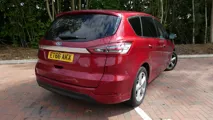
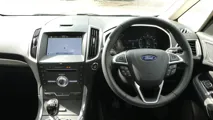

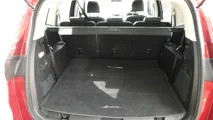
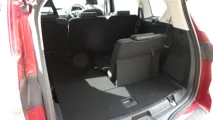

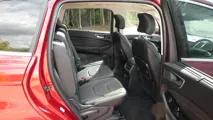



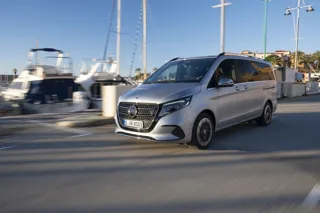


 Diesel
Diesel
